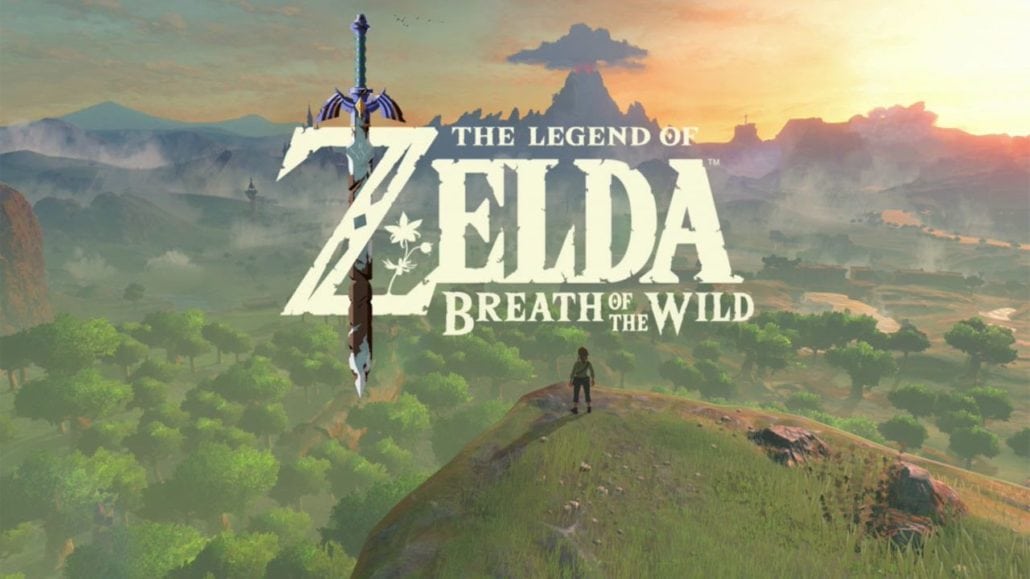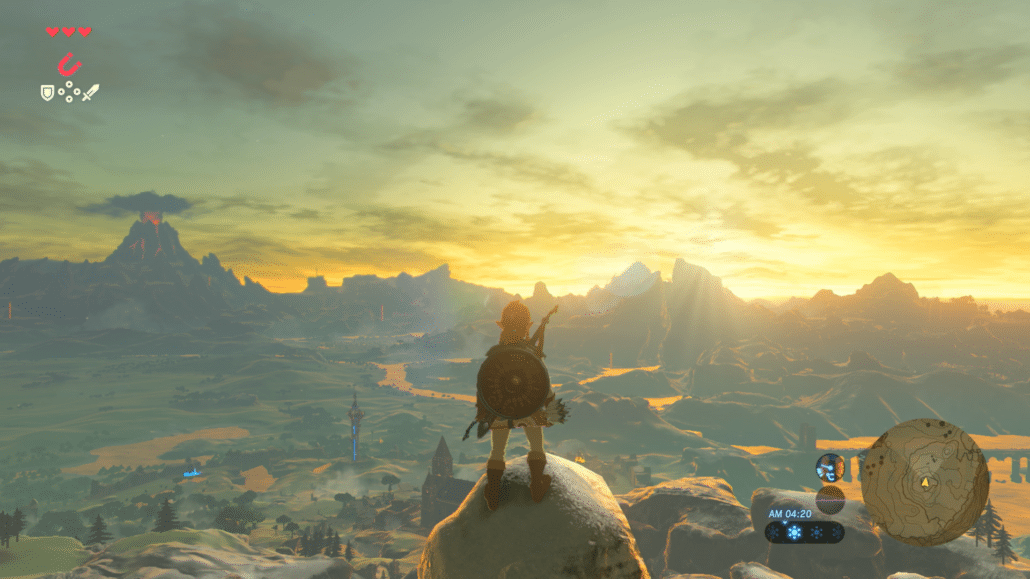Nintendo – 1 Player – Out now on Wii U (version tested) & Switch
Breath of the Wild is the gravely under appreciated Wii U’s epitaph, and its successors debut feature. And regardless of which platform you choose, it couldn’t have been a better decision in the Wii U/Switch transition. It echoes the Gamecube’s last days, as Twilight Princess was released for both that and the Wii, meaning that if you’re not an early adopter of the new hardware, you don’t have to miss out on such an epic game.
And epic this game is. It has been said from day one when the game was announced, that the world in Breath of the Wild, is open and free to explore from the off. On what scale, it was not divulged, but it turns out it’s massive. So vast in fact, upon first venturing in to the big wide world, it was occasionally overwhelming. As nearly all preceding Zelda games have a set pattern (even if it’s not linear), this turns it on its head, as opposed to holding your hand, it throws you in the deep end after only one swimming lesson, expecting you to find out for yourself how to keep your head above water and stay alive. Which at first is difficult as you get to grips with games mechanics. If you don’t have a combat strategy, you are going to die. A lot. For the first time in a Zelda game, it introduces weapon durability and optional clothing, meaning you aren’t stuck with the same sword, and the iconic green tunic is a bygone from a different age. Another thing that’s clearly different from the start is Link’s abilities. Normally in Zelda games, abilities and special equipment are something gained from progressing through dungeons. This time the abilities are received almost at the very start, meaning there’s no real set path you have to follow in order to progress in certain areas. Once you’re given the freedom to roam, there’s a choice of following the story missions, or doing your own thing. The story is pretty much the same as it always has been, yet it’s presented in such a way this time around, that you can’t help but get invested in it, and there’s an underlying feeling of fate and doom, that although is usually the case if the hero isn’t successful, feels even more present than ever.
Gone are the dungeons of the old games, instead they’re replaced with shrines. These are small challenges, normally involving link’s abilities, where you’ll be rewarded with a Spirit Orb upon completion. There’s many of these dotted around Hyrule, some in plain sight, some hidden, and some only accessible after completing a task. Once you have activated the shrine, this enables fast travel to that location. Fast travel eventually becomes a necessity, just because of the gargantuan size of Hyrule. The spirit orbs are redeemable in exchange for either heart containers or stamina. This seems to be the only way you’re able to increase these in the game, other than boss fights. The bosses themselves, compared to some of the nasties you come across in the world, are relatively straight-forward. There’s a set pattern to their attacks and will likely require the use of Link’s special abilities to defeat them. There are four bosses to fight before you’re able to take on Ganon. These are all fought when you take on each of the four Divine Beasts. Ginormous mechanical animals located in different areas of Hyrule. When all four of them have been liberated from Ganon’s dark magic, they will assist you in the final dust up with porcine menace. How and what order you approach these are almost entirely down to the player, as there is no set path. Like the previous games however, these areas all have their own elemental environments, meaning you’ll need to find the necessary outfit in order to resist the drastic conditions of each area. These seem inconsequential at times, however, as the lead up to the the beasts and the sub quests seem more enjoyable, and infinitely more compelling. That being said, the reward of taking on the Divine Beasts, outweighs the risk.
Once you get used to how things work, the world is pretty much your oyster, and although you’ll still be picking up new abilities, ideas and items after dozens of hours play time, it never gets old. There’s almost something therapeutic about scaling mountains and towers, massive grassy hill sides and cliff faces. The kingdom of Hyrule has never looked better, and the stripped down music of the wilderness is very calming. At first it was somewhat jarring to see that the classic themes and scores aren’t as present as they used to be. Instead there’s more relaxed piano arrangements, where you’ll only hear the occasional tease of the notes to the more recognisable scores. This works in the games favour however, as the bombastic theme wouldn’t be in keeping with nature of the gameplay. There’s a seemingly endless wealth of things to do, and even if it’s not entirely relevant to what’s going on, you’ll almost always get side-tracked. Nintendo have reinvented the wheel here and it’s resulted in not only a fantastic Zelda game, but probably the greatest adventure game in many years, surpassing its predecessors and perhaps inadvertently ageing them in the process. It’s impossible to think of a single defining feature to put this game in a nutshell. It’s the accumulation of the little things combined with this huge world, with its own ecosystems and climates, and the flora and fauna. It’s a modern masterpiece, which takes the best parts of every game that’s influenced it and even improves upon them. There couldn’t have been a better send off for Nintendo’s greatest console.








Be the first to comment